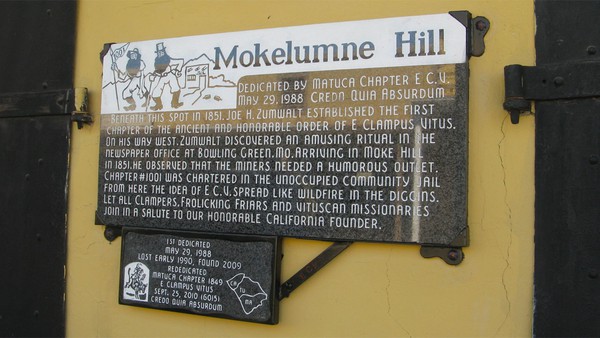On downtown San Jose’s Milligan Lot sits a home from the Civil War era that could be bulldozed to make way for a parking lot. Preservationists believe there are more creative options for this pretty creekside site.
On the topic of Earth’s history, blogger/author Tim Urban offered a unique take to Derek Thompson, host of the Plain English podcast. Urban describes what the past quarter-millennium would look like condensed into a 1,000-page book, in which each page covers 250 years.
Written history doesn’t even start until page 975. Christianity starts at page 993. But on the 1,000th page—covering the early 1770s to today—Urban says, “suddenly it looks nothing like the other pages.”
Urban elaborates on the dizzying social, political and technological revolutions that have steamrolled over civilization the last 250 years. It’s a rate of change that far outstrips anything our ancestors faced, so it’s no wonder we struggle to preserve what we can of the past.
Thanks to the internet—which itself was born in 1969, 1983 or 1990, depending on what one defines it to be—historical facts and even digital artifacts can be found online. But there’s nothing like experiencing historical objects and places in the real world.
Pinning Down the Past
All around the state, there are citizen groups serving as guardians of sites that evoke our ancestors’ sensory experiences. Preserving history is always challenging, given that economic progress is fueled by new construction, but it’s easier in an area where tourists flock to enjoy historic districts. That’s not the case in Silicon Valley, which makes the work of the Preservation Action Council of San Jose that much more difficult. But PAC*SJ has come up with some clever ways to spread the word on threatened local landmarks.
Still Standing ... for Now

Each year, the Preservation Action Council of San Jose sends out a warning to architectural history buffs, identifying the Endangered 8—those structures most likely to be lost to rot and redevelopment.
History Lessons
When properly cared for, historical landmarks and museums safeguard our collective memories. As reporter Pam Marino writes in a recent cover story for Monterey County Weekly, local governments have an important role to play. She quotes Bob Evans, chair of Monterey’s Museums and Cultural Arts Commission, who says, “This is the most historic city in California, and maybe the West Coast.” And Marino asks what the city can do to make that history more accessible to the public.
Whether under the care of local governments or volunteer curators, museums and historic sites help a community understand its past. In each county where California Local is active, we list community groups involved in preservation and also offer articles like the one below, which catalogs the best repositories of history in Sacramento, which has been the state capital since 1854.
Hidden History in the Birthplace of California

Pam Marino of Monterey County Weekly reports that the city government there is grappling with a unique problem: How to provide access to the places that make Monterey “the most historic city in California.”
Capital Collections

Sacramento’s rich past can be explored by visiting its many and varied historical museums.
Marking Time
In addition to saving relics of the past, it’s also important to save the stories. That’s where E Clampus Vitus comes in. This secretive fraternal organization has mounted more than 1,400 historical markers across the state. Writes California Local’s Richard von Busack, “Clamper plaques can be found across the state, commemorating yesterday’s famous bordellos, demised breweries, “hurdy houses” (taxi dance bars), frontier hellholes, and obscure battle sites.” Some commemorate people and places that are part fable, part fact, such as the story of Joaquin Murrieta. (Much more can be learned about The Life and Times of Joaquín Murieta—the first novel published in California—in a scholarly Paris Review article.) But as reporter Maxwell Scott (Carleton Young) said at the end of The Man Who Shot Liberty Valance, “This is the West, sir. When the legend becomes fact, print the legend.”
Atlas Absurdum

Dedicated to commemorating parts of history that sometimes offend the local chamber of commerce, E Clampus Vitus has studded California with plaques.
• California Caste Discrimination Bill Stays Alive
The first-in-the-nation measure to add caste to state anti-discrimination laws, which passed the state Senate, survives the Assembly judiciary committee. The bill’s author refused to water down the measure further.
(07/05/2023) → CalMatters


 On downtown San Jose’s Milligan Lot sits a home from the Civil War era that could be bulldozed to make way for a parking lot. Preservationists believe there are more creative options for this pretty creekside site.
On downtown San Jose’s Milligan Lot sits a home from the Civil War era that could be bulldozed to make way for a parking lot. Preservationists believe there are more creative options for this pretty creekside site.









